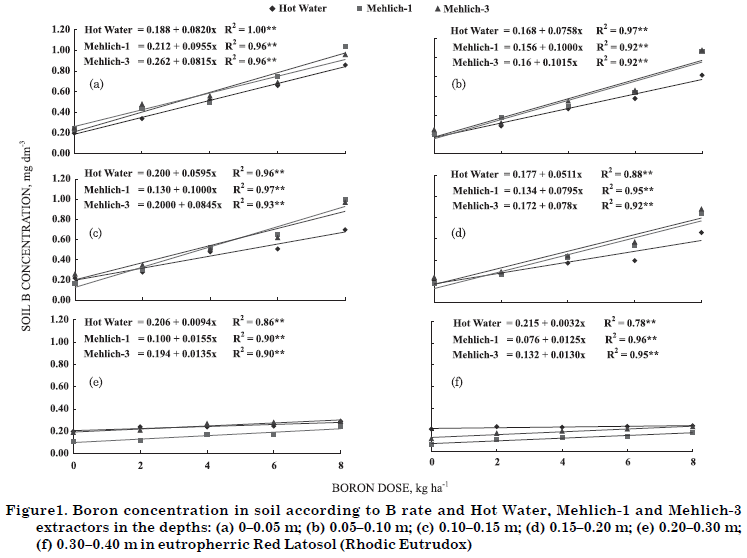The deficiency or excess of micronutrients has been determined by analyses of soil and plant tissue. In Brazil, the lack of studies that would define and standardize extraction and determination methods, as well as lack of correlation and calibration studies, makes it difficult to establish limits of concentration classes for analysis interpretation and fertilizer recommendations for crops. A specific extractor for soil analysis is sometimes chosen due to the ease of use in the laboratory and not in view of its efficiency in determining a bioavailable nutrient. The objectives of this study were to: (a) evaluate B concentrations in the soil as related to the fertilizer rate, soil depth and extractor; (b) verify the nutrient movement in the soil profile; (c) evaluate efficiency of Hot Water, Mehlich-1 and Mehlich-3 as available B extractors, using sunflower as test plant. The experimental design consisted of complete randomized blocks with four replications and treatments of five B rates (0, 2, 4, 6, and 8 kg ha-1) applied to the soil surface and evaluated at six depths (0-0.05, 0.05-0.10, 0.10-0.15, 0.15-0.20, 0.20-0.30, and 0.30-0.40 m). Boron concentrations in the soil extracted by Hot Water, Mehlich-1 and Mehlich-3 extractors increased linearly in relation to B rates at all depths evaluated, indicating B mobility in the profile. The extractors had different B extraction capacities, but were all efficient to evaluate bioavailability of the nutrient to sunflower. Mehlich-1 and Mehlich-3 can therefore be used to analyze B as well as Hot Water.
available boron; hot water; Mehlich-1; Mehlich-3; soil analysis







